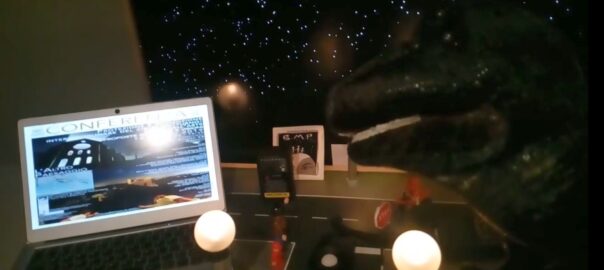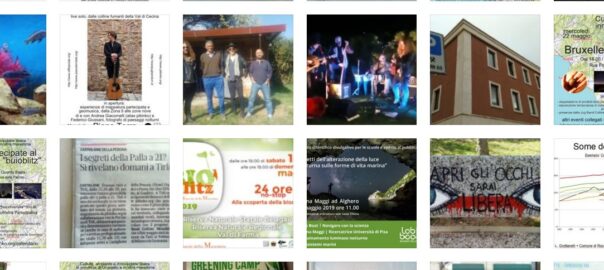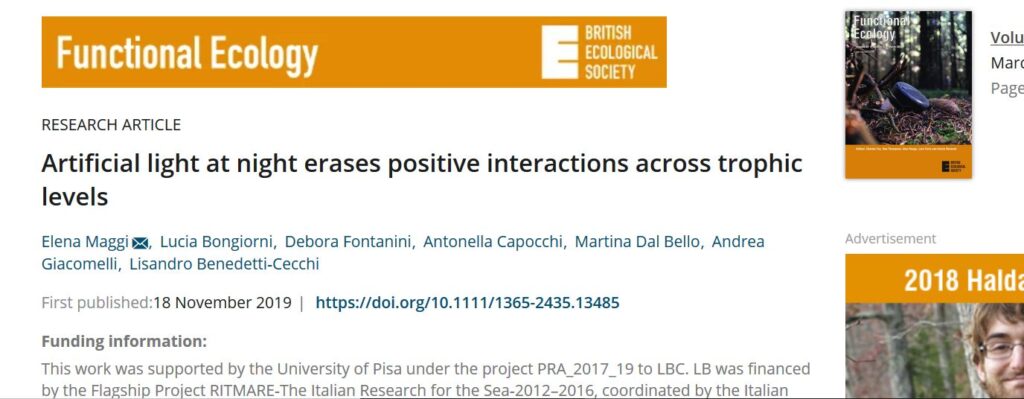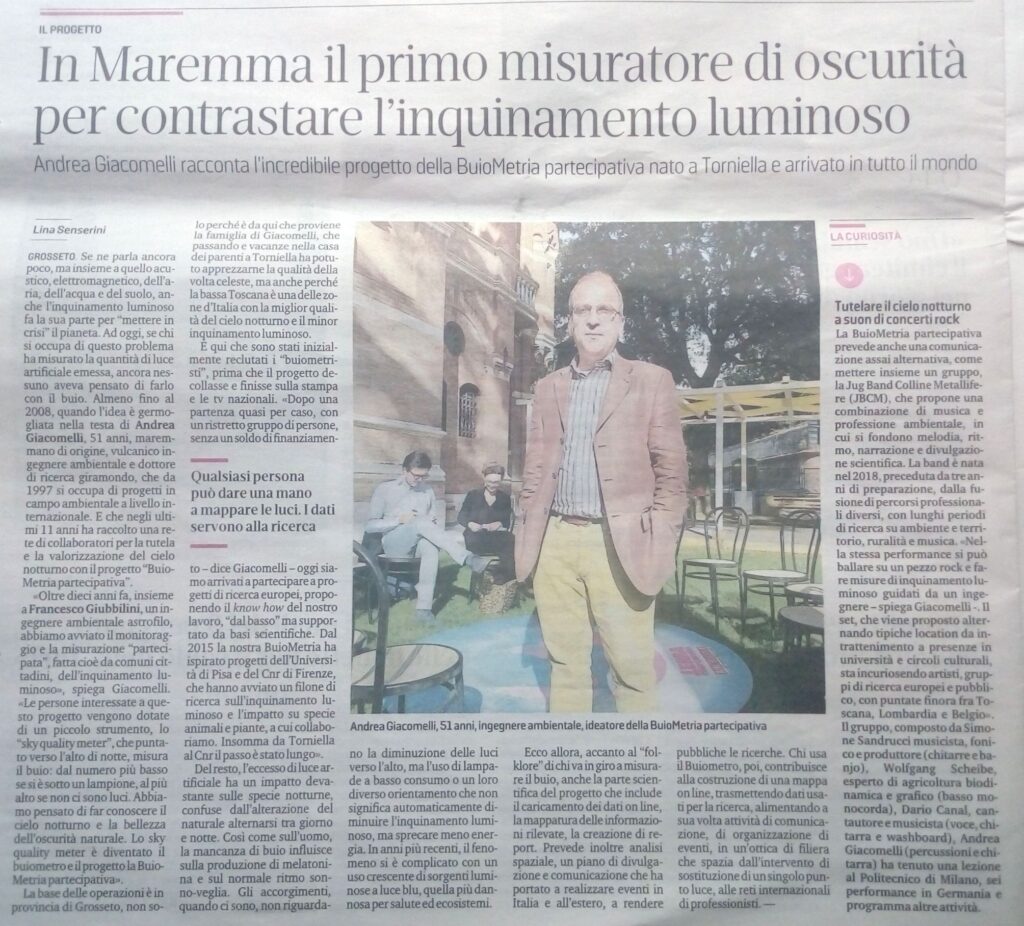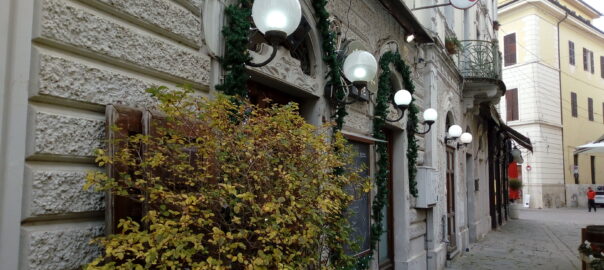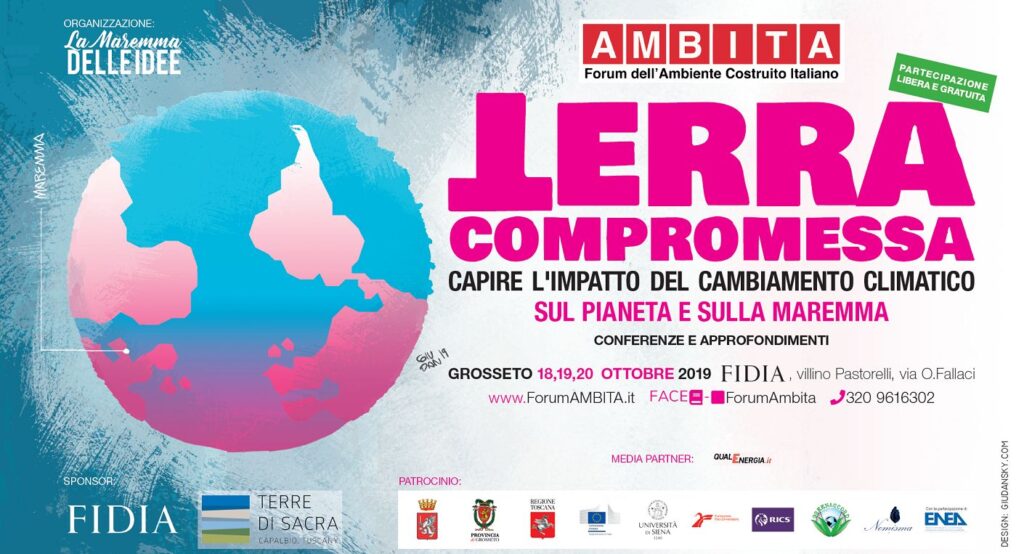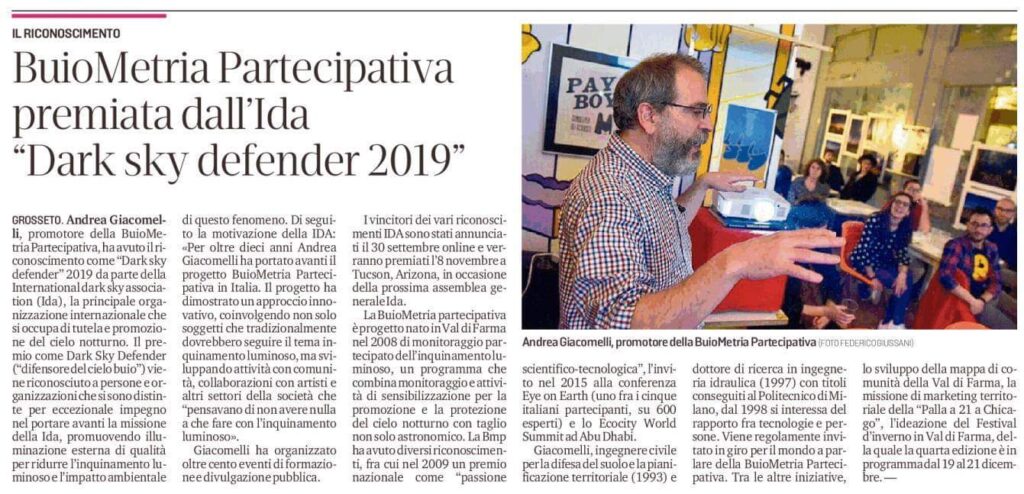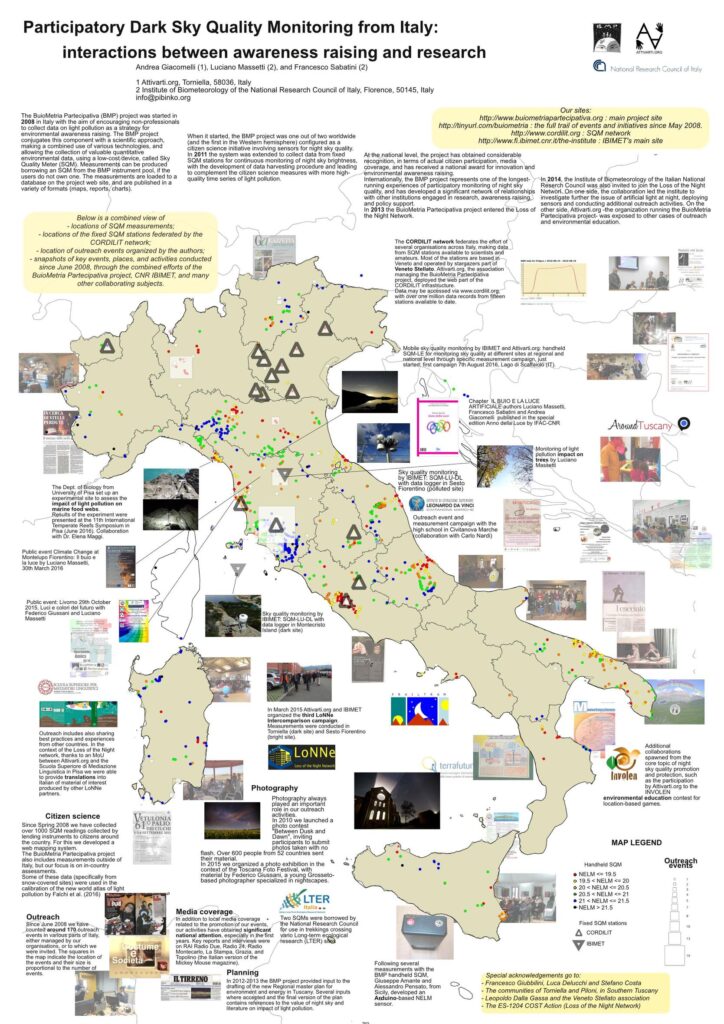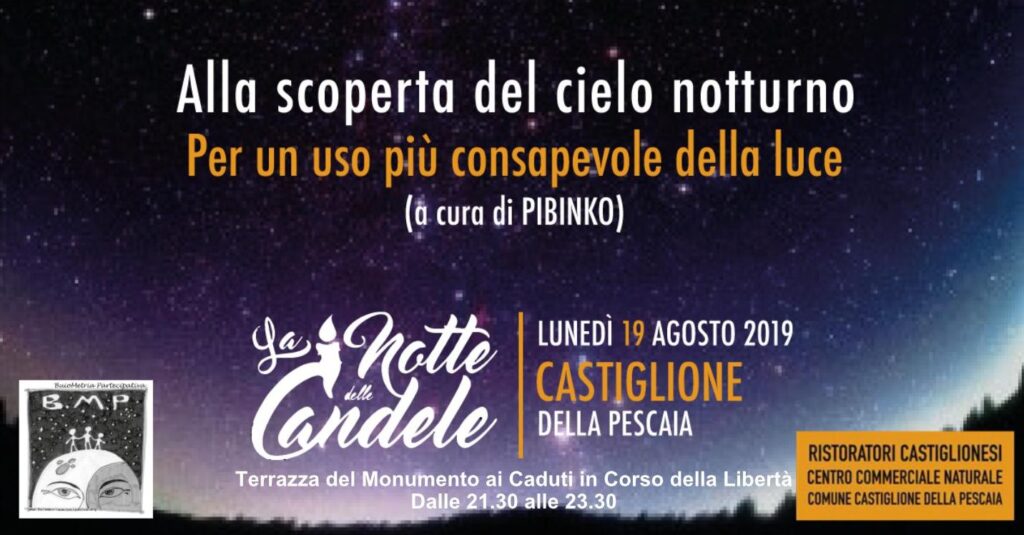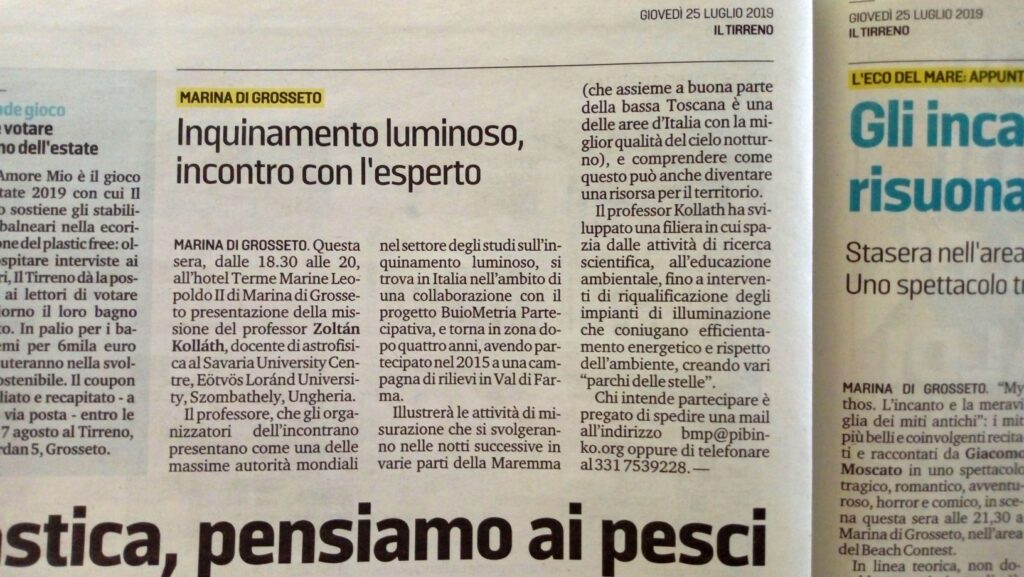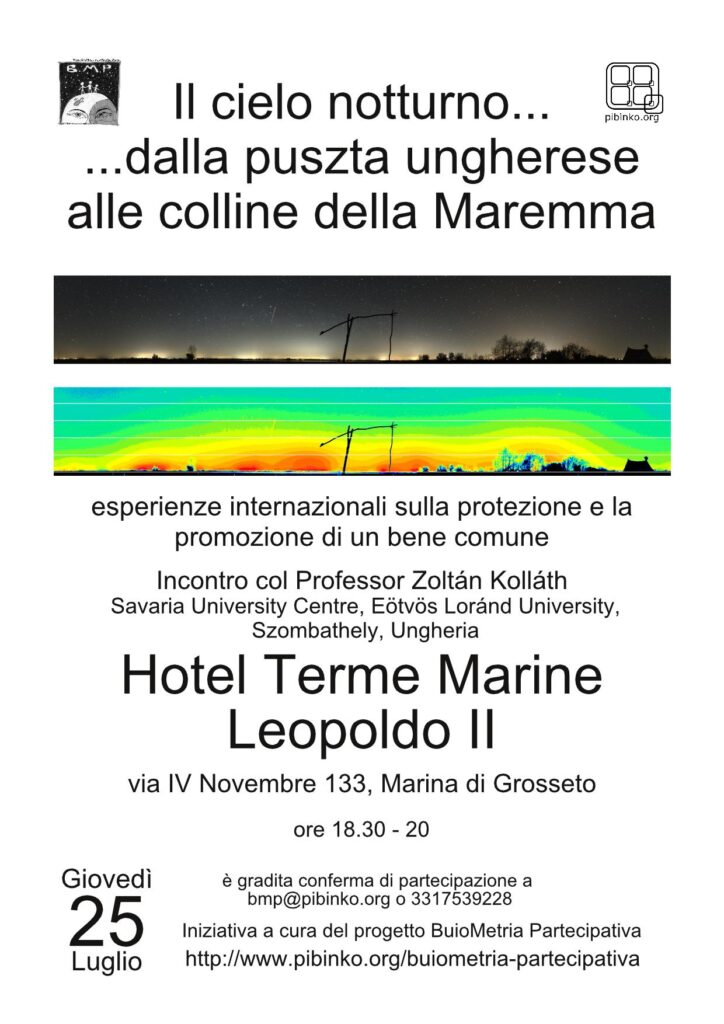TO BE TRANSLATED
Il 23 marzo e 16 aprile 2020 ho tenuto un corso integrativo sull’Applicazione di metodi partecipati alla progettazione di interventi di tutela e valorizzazione interdisciplinare del cielo notturno per gli studenti del corso di Composizione Architettonica per la Laurea in Ingegneria Edile-Architettura dell’Università di Brescia (docente prof. Olivia Longo).
Il corso ha costituito lo sviluppo del convegno tenuto sullo stesso tema nel maggio 2019, con riconoscimento di crediti formativi professionali per ingegneri e architetti, sempre all’Università di Brescia. Durante il corso c’è stato anche un saluto
Per approfondimenti
- Il convegno del 2019 a Brescia
- Il videointervento di Dario Canal per gli studenti proposto il 16 aprile 2020
- BuioMetria Partecipativa
- Servizi di promozione, comunicazione e facilitazione di pibinko.org
- Servizi di divulgazione su luce e buio di pibinko.org
- Vedere la Via Lattea di giorno – con Mauro Tirannosauro feat. Liliana Cafiero, video che spiega come vedere la via lattea di giorno, realizzato ad hoc per il corso.
Per informazioni e booking: info@pibinko.org
